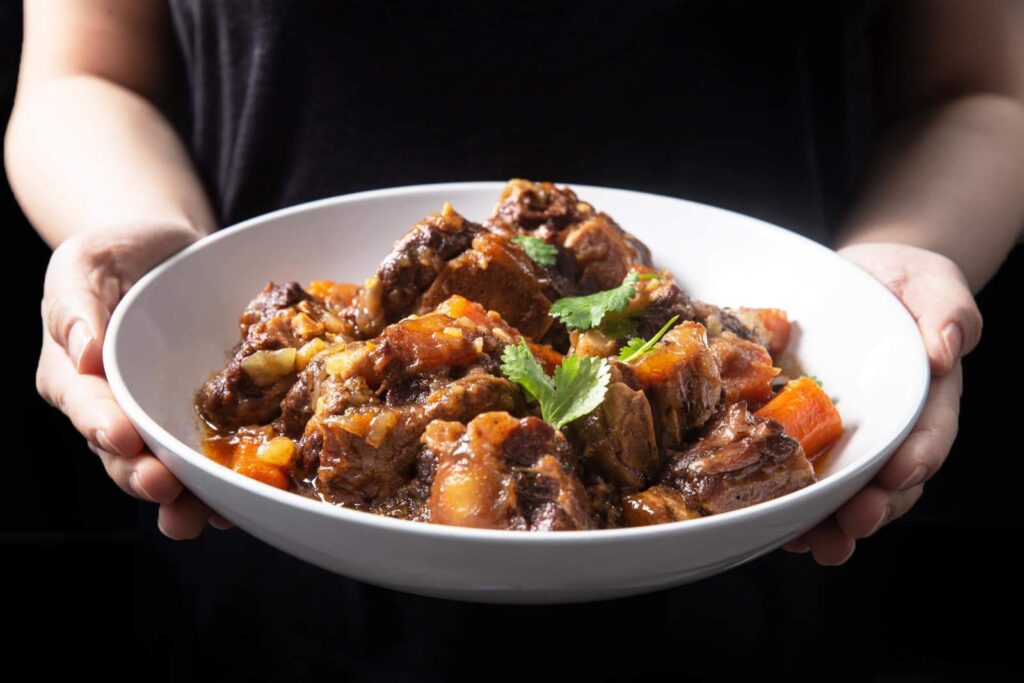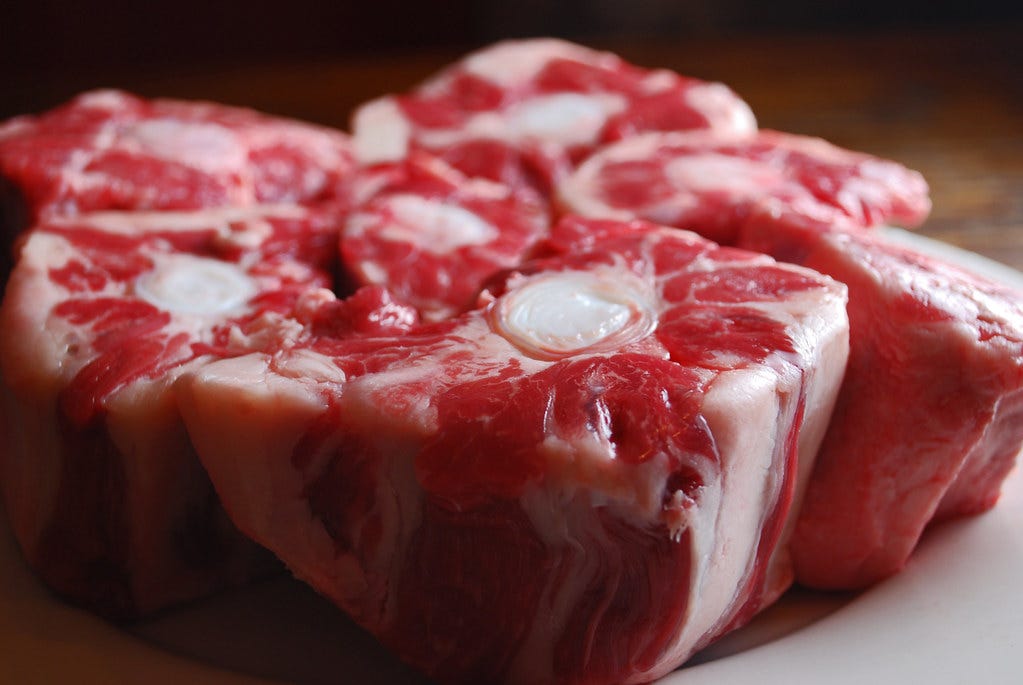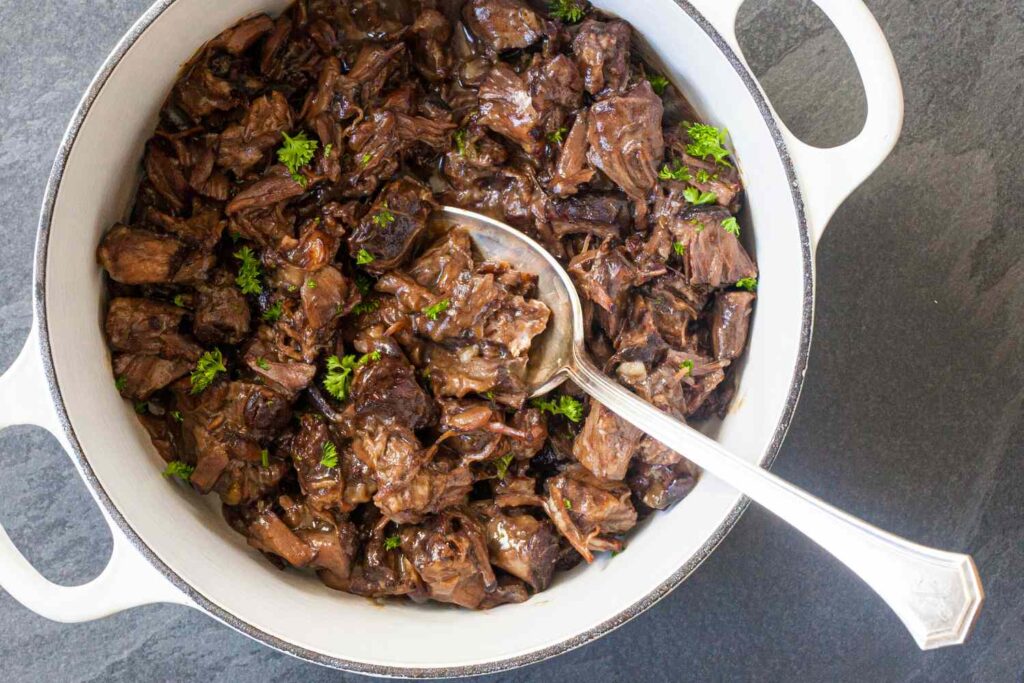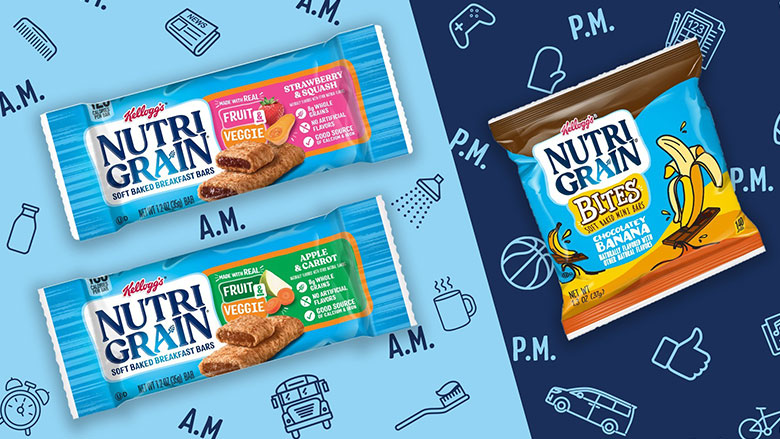1. Introduction to Oxtail and its Nutritional Value
Oxtail, as the name suggests, refers to the tail of cattle, particularly oxen. It is a flavorful and rich cut of meat that has been enjoyed in various cuisines around the world for centuries. Despite its popularity, there’s often a debate surrounding its healthiness, which warrants a closer examination of its nutritional value.
What is Oxtail?
Oxtail is a gelatinous and flavorful meat cut that comes from the tail of cattle, primarily oxen but also cows and sometimes even other bovines. It is known for its rich flavor and tender texture when cooked slowly. Oxtail is commonly used in soups, stews, and braised dishes in many culinary traditions, including European, Caribbean, African, and Asian cuisines.
Nutritional Composition of Oxtail
Oxtail is not only valued for its taste but also for its nutritional content. It offers a unique blend of essential nutrients that can contribute to a balanced diet. Here’s a breakdown of the key nutritional components found in oxtail:
Protein:
Oxtail is a rich source of high-quality protein, which is essential for building and repairing tissues in the body. Protein is also crucial for supporting muscle growth and overall bodily function.
Minerals:
Oxtail contains essential minerals such as iron, zinc, and potassium. Iron is important for blood health and oxygen transport, while zinc plays a role in immune function and wound healing. Potassium is necessary for maintaining electrolyte balance and supporting heart health.
Collagen:
Oxtail is also prized for its collagen content. Collagen is a type of protein that provides structure to connective tissues such as skin, bones, and joints. Consuming collagen-rich foods like oxtail may support joint health and promote skin elasticity.
Key Takeaways
- Oxtail is a flavorful and versatile cut of meat that comes from the tail of cattle.
- It is commonly used in various culinary traditions around the world, including soups, stews, and braised dishes.
- Oxtail is nutritionally dense, providing high-quality protein, essential minerals, and collagen.
- Incorporating oxtail into your diet can contribute to a balanced and nutritious eating plan, offering a range of health benefits.
In the following sections, we will delve deeper into the specific health benefits of consuming oxtail, as well as any potential considerations or risks associated with its consumption.

2. Health Benefits of Oxtail Consumption
Oxtail consumption offers a range of health benefits owing to its nutrient-rich composition. Let’s explore these benefits in detail:
1. Oxtail as a Source of Protein and Collagen:
- Protein is essential for various bodily functions, including muscle repair, growth, and immune function. Oxtail provides a substantial amount of high-quality protein, making it an excellent choice for individuals looking to meet their protein needs.
- Moreover, oxtail is rich in collagen, a structural protein that supports the health of connective tissues such as skin, bones, and joints. Collagen is particularly beneficial for maintaining joint health, promoting skin elasticity, and supporting overall structural integrity.
2. Minerals in Oxtail and Their Health Benefits:
- Iron: Oxtail is a significant source of iron, a mineral essential for the production of hemoglobin, a protein in red blood cells that carries oxygen throughout the body. Adequate iron intake helps prevent anemia and ensures optimal oxygen delivery to tissues.
- Zinc: Another important mineral found in oxtail is zinc, which plays a crucial role in immune function, wound healing, and DNA synthesis. Consuming zinc-rich foods like oxtail can support immune system health and promote overall well-being.
- Potassium: Oxtail also contains potassium, an electrolyte that helps regulate fluid balance, muscle contractions, and nerve signals. Adequate potassium intake is important for maintaining heart health and blood pressure levels.
3. Collagen and Joint Health:
- The collagen content in oxtail is particularly beneficial for joint health. Collagen helps maintain the integrity of cartilage, the flexible tissue that cushions joints and prevents friction between bones. By supporting joint health, consuming collagen-rich foods like oxtail may help reduce the risk of joint pain, stiffness, and arthritis.
4. Impact on Digestive Health:
- Oxtail contains gelatin, a protein derived from collagen, which can support digestive health. Gelatin has been shown to improve gut integrity, reduce inflammation, and promote the growth of beneficial gut bacteria. Incorporating oxtail into the diet may help support a healthy digestive system and alleviate digestive issues such as leaky gut syndrome and irritable bowel syndrome (IBS).
5. Comparative Digestibility with Other Meats:
- Oxtail is often regarded as a highly digestible meat due to its tender texture and gelatinous consistency when cooked. Compared to leaner cuts of meat, oxtail may be easier to digest, making it suitable for individuals with sensitive digestive systems or those recovering from digestive issues.
In summary, consuming oxtail can offer a multitude of health benefits, including providing essential nutrients like protein, minerals, and collagen, supporting joint health, and promoting digestive wellness. Integrating oxtail into a balanced diet can contribute to overall health and well-being. However, it’s important to consider individual dietary needs and preferences when incorporating oxtail into meals.

3. Assessing Oxtail’s Healthiness
While oxtail offers various health benefits, it’s important to assess its overall healthiness by considering its nutritional profile and potential risks. Let’s delve deeper into this evaluation:
1. Oxtail’s Nutritional Profile:
- Oxtail is nutritionally dense, providing essential nutrients such as protein, iron, zinc, and collagen. However, it’s also important to consider its fat and cholesterol content.
- While oxtail is a good source of protein and contains beneficial minerals, it is also relatively high in saturated fat and cholesterol. Consuming high amounts of saturated fat and cholesterol may increase the risk of cardiovascular diseases such as heart disease and stroke.
2. Evaluation of Health Risks:
- High Saturated Fat: Oxtail is known to be high in saturated fat, which can raise levels of LDL (bad) cholesterol in the blood. Elevated LDL cholesterol is a risk factor for heart disease and other cardiovascular conditions.
- Elevated Cholesterol: Additionally, oxtail contains cholesterol, a fatty substance found in animal products. Consuming excessive cholesterol from sources like oxtail may contribute to the development of atherosclerosis and other cholesterol-related health issues.
3. Understanding Fat and Cholesterol Content:
- Moderation is Key: While oxtail can be enjoyed as part of a balanced diet, it’s important to consume it in moderation, especially for individuals with pre-existing cardiovascular conditions or those at risk of developing them.
- Dietary Guidelines: Health organizations recommend limiting saturated fat intake to less than 10% of total daily calories and cholesterol intake to less than 300 milligrams per day for most adults. Therefore, individuals should be mindful of their overall dietary intake and consider the fat and cholesterol content of oxtail when planning meals.
In conclusion, while oxtail offers valuable nutrients and can be part of a healthy diet, it’s essential to consider its fat and cholesterol content and consume it in moderation. By incorporating oxtail into a balanced diet alongside other nutrient-rich foods, individuals can enjoy its flavor and reap its health benefits while minimizing potential risks to cardiovascular health.

4. Cooking and Consumption Tips for Oxtail
Cooking and preparing oxtail properly can enhance its flavor and nutritional value while ensuring food safety. Here are some tips for cooking and consuming oxtail:
1. Cooking Methods and Their Implications on Health:
- Slow Cooking: Oxtail is best cooked using slow, moist cooking methods such as braising, stewing, or simmering. Slow cooking helps break down the tough connective tissues in oxtail, resulting in a tender and flavorful dish.
- Avoid Frying: While frying may be a popular cooking method for some meats, it’s not ideal for oxtail due to its high fat content. Frying can increase the calorie and fat content of oxtail dishes, negating some of its health benefits.
2. Tips for Cooking Oxtail for Optimal Health:
- Trim Excess Fat: Before cooking, trim any visible fat from the oxtail to reduce its saturated fat content. While oxtail is naturally fatty, removing excess fat can help make the dish lighter and healthier.
- Use Flavorful Ingredients: Enhance the flavor of oxtail dishes with aromatic herbs, spices, and vegetables. This allows you to add flavor without relying on excessive amounts of salt or fat.
3. Serving Suggestions and Recipes:
- Oxtail Soup: One popular way to enjoy oxtail is in a hearty soup. Simmer oxtail with vegetables, herbs, and broth to create a nourishing and comforting dish. Serve with crusty bread for a satisfying meal.
- Braised Oxtail: Another delicious option is to braise oxtail with wine, tomatoes, and aromatics until tender and falling off the bone. This results in a rich and flavorful dish that pairs well with mashed potatoes or rice.
4. Considerations for Food Safety:
- Thorough Cooking: Ensure that oxtail is cooked thoroughly to kill any harmful bacteria and reduce the risk of foodborne illness. Use a meat thermometer to ensure that the internal temperature of the meat reaches a safe level.
- Storage and Leftovers: Store cooked oxtail in the refrigerator promptly and consume leftovers within a few days. Reheat leftovers to an internal temperature of at least 165°F (74°C) before serving.
By following these cooking and consumption tips, you can enjoy delicious and nutritious oxtail dishes while ensuring food safety and optimal health benefits. Experiment with different recipes and cooking methods to discover new ways to incorporate oxtail into your diet.
5. Safety Considerations
While oxtail can be a flavorful and nutritious addition to your diet, it’s important to handle and prepare it safely to avoid foodborne illnesses. Here are some safety considerations when working with oxtail:
1. Understanding Oxtail: A Safety Guide:
- Selection and Handling: When purchasing oxtail, choose cuts that appear fresh, with no signs of discoloration or unpleasant odor. Store raw oxtail in the refrigerator or freezer promptly to prevent bacterial growth.
- Cooking Oxtail Safely: Ensure that oxtail is cooked to a safe internal temperature to kill any harmful bacteria. Use a food thermometer to verify that the internal temperature reaches at least 145°F (63°C) for beef cuts.
- Cross-Contamination: Prevent cross-contamination by using separate cutting boards, utensils, and surfaces for raw oxtail and other foods. Wash hands, utensils, and surfaces thoroughly after handling raw meat to avoid spreading bacteria.
- Storage and Leftovers: Store cooked oxtail leftovers in shallow containers in the refrigerator within two hours of cooking. Consume leftovers within three to four days or freeze them for longer storage.
2. The Nutritional Profile of Oxtail:
- While oxtail offers various health benefits, it’s essential to be mindful of its nutritional profile, particularly its fat and cholesterol content. Moderation is key when incorporating oxtail into your diet, especially if you have existing health conditions or dietary restrictions.
3. Is Oxtail Riskier than Other Meats?
- Oxtail is not inherently riskier than other meats when handled and cooked properly. However, like all meats, it can harbor bacteria such as E. coli, Salmonella, and Listeria if mishandled or undercooked. Proper cooking and food safety practices are essential to minimize the risk of foodborne illness.
4. Key Takeaways:
- Follow food safety guidelines when selecting, handling, and cooking oxtail to minimize the risk of foodborne illness.
- Cook oxtail to a safe internal temperature and avoid cross-contamination with other foods.
- Be mindful of the fat and cholesterol content of oxtail and consume it in moderation as part of a balanced diet.
By prioritizing food safety and making informed dietary choices, you can enjoy the flavorful and nutritious benefits of oxtail while minimizing potential risks to your health.
6. Conclusion
In conclusion, the question of whether oxtail is healthy to eat can be answered with careful consideration of its nutritional value, cooking methods, and safety precautions.
Summarizing Oxtail’s Healthiness:
- Oxtail is a flavorful and versatile cut of meat that offers a range of health benefits, including being a rich source of protein, essential minerals like iron and zinc, and collagen for joint health and skin elasticity.
- However, it’s important to be mindful of its high saturated fat and cholesterol content, which can pose risks to cardiovascular health if consumed in excess.
- Cooking oxtail using methods like braising or stewing can help enhance its flavor and tenderness while minimizing the need for added fats.
- Safety considerations such as proper handling, cooking to the correct internal temperature, and avoiding cross-contamination are crucial for reducing the risk of foodborne illness when working with oxtail.
Final Thoughts and Recommendations:
- Incorporating oxtail into a balanced diet can be part of a healthy eating plan, provided it is consumed in moderation and alongside other nutrient-rich foods.
- Consideration of individual dietary needs, preferences, and health conditions is essential when including oxtail in meals.
- By following food safety guidelines, making informed cooking choices, and enjoying oxtail in moderation, individuals can savor its rich flavor and reap its nutritional benefits while promoting overall health and well-being.
In conclusion, while oxtail may not be suitable for everyone or for everyday consumption, it can certainly be enjoyed as part of a varied and balanced diet when prepared and consumed mindfully.
7. FAQs about Oxtail
1. Is oxtail a healthy meat option?
- Answer: Oxtail can be a healthy meat option due to its rich protein content, essential minerals like iron and zinc, and collagen for joint health. However, it’s also high in saturated fat and cholesterol, so moderation is key.
2. How should I cook oxtail for optimal health benefits?
- Answer: Cooking oxtail using methods like braising or stewing can help enhance its flavor and tenderness while minimizing the need for added fats.
3. What are the potential health risks associated with consuming oxtail?
- Answer: The high saturated fat and cholesterol content of oxtail can pose risks to cardiovascular health if consumed in excess.
4. Can oxtail contribute to joint health?
- Answer: Yes, oxtail contains collagen, which supports joint health and can help reduce the risk of joint pain and stiffness.
5. How should I handle and store raw oxtail safely?
- Answer: When purchasing oxtail, choose cuts that appear fresh, store it promptly in the refrigerator or freezer, and ensure proper cooking to kill any harmful bacteria.
6. What is the recommended cooking temperature for oxtail?
- Answer: Cook oxtail to a safe internal temperature of at least 145°F (63°C) to ensure food safety.
7. Can oxtail be part of a balanced diet for individuals with cardiovascular conditions?
- Answer: Yes, oxtail can be enjoyed in moderation as part of a balanced diet for individuals with cardiovascular conditions, but it’s essential to monitor intake of saturated fat and cholesterol.
8. Are there any alternatives to frying oxtail?
- Answer: Yes, oxtail can be cooked using slow, moist methods such as braising or stewing, which enhance flavor without relying on excessive fats.
9. How long can cooked oxtail be safely stored in the refrigerator?
- Answer: Cooked oxtail leftovers should be stored in the refrigerator within two hours of cooking and consumed within three to four days.
10. Is oxtail suitable for individuals with dietary restrictions?
- Answer: Oxtail can be enjoyed by individuals with dietary restrictions, but it’s important to consider individual needs and preferences, especially regarding fat and cholesterol intake.



Pingback: 7 Stages of Lewy Body Dementia
Pingback: Dry Socket vs Healthy Socket